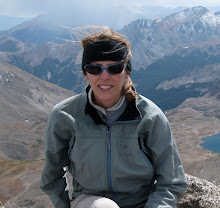I could talk all day about the best raingear, softshell jackets, and antimicrobial polypropylene base layers. I could discourse on the virtues of one pack’s internal frame construction versus another’s top-loader functionality.
But when it comes down to it, you don’t have to be outfitted in all the latest (or most expensive) gear to climb a fourteener. The only thing you absolutely must have are the 10 Essentials.
According to Mountaineering: The Freedom of the Hills (see more on FotH below), the 10 items every hiker should have on his or her person at all times are:
- Map
- Compass*
- Sunglasses and sunscreen
- Extra food and water
- Extra clothes
- Headlamp/flashlight
- First aid kit
- Fire starter
- Matches
- Knife
*Can be supplemented (not replaced) with a GPS
As long as you have these 10 things covered, your chances of survival are greatly enhanced. If you also prefer to be comfortable, here are a few general recommendations:
Pack – Needs to hold all of your 10 essentials (2,000-3,000 cubic inches for summer day hikes). Hydration compatibility (see #3) is a big plus. I’m currently using an Osprey Stratos 40 and I’m very pleased with it. It has a mesh panel that allows air to circulate down your back, which helps keep you cool and comfortable.
Clothing – This local Colorado blogger created a great page on what to wear in the high country. He explains why cotton should be avoided at all costs, evaluates various synthetic fabrics and gives recommendations for different seasons.
Hydration Bladder – Carrying a water bottle is a recipe for dehydration. You won’t want to stop, pull the bottle out of your pack and take a drink. The solution is a hydration bladder. It allows you to drink from a hose while you hike. Look for one that holds at least 2 liters.

Trekking Poles – Not everyone uses them, some people disparage them, but I personally wouldn’t hit any trail without them. Poles save a ton of wear on your knees and are essential for crossing streams or rocky terrain.

A few more words on Freedom of the Hills. It is the definitive guide for anyone thinking of getting into mountaineering. The book, which first came out in 1960 and is now in its 7th edition, provides detailed descriptions of everything from pitching a tent above timberline to proper ice axe technique.
While you may not use a lot of this stuff climbing fourteeners in the summer, it’s an excellent resource that will teach you how to be safer in the mountains.
-Sarah








